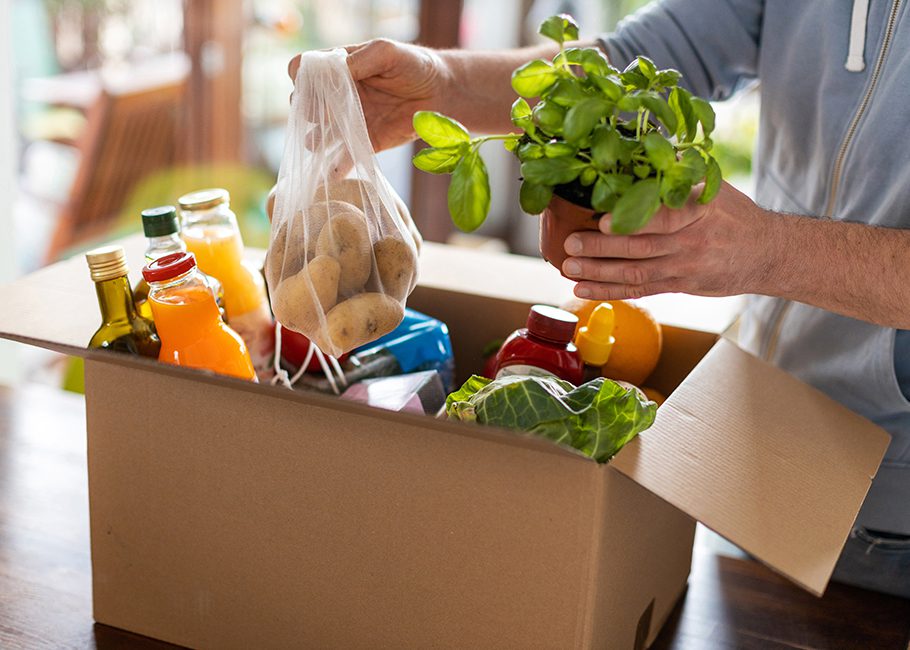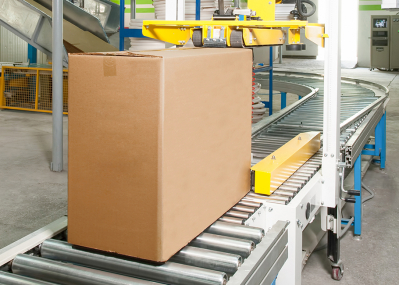
What fuels the food industry? The answer is that everyone eats.
That simple answer may be true, but consumers have demonstrated that they don’t want boring meals. They also lean heavily into convenience, and they gravitate to foods and brands that align with their lifestyles and mindsets. As a result, it’s more important than ever to track food trends and to understand where consumers are leading the market.
These are the five hottest food industry trends that Packaging Corporation of America is helping our customers navigate as they prepare for what’s next:
- Sustainable packaging is here to stay
- Direct-to-consumer groceries
- Offsetting inflation
- Elevating brand storytelling
- Designing easy-to-handle packaging
1. Sustainable Packaging Is Here to Stay
Consumers are demanding sustainable products. They want to do their part to reduce waste by choosing more eco-friendly products. That includes the packaging.
Many food companies, especially startups, are going back to basics—paper-based, kraft (brown) packaging materials. This packaging is perceived by consumers as better for the environment, and it is. Corrugated is sustainable, biodegradable and one of the most recycled packaging products available today, with 89% of all corrugated products recovered and directed into the recycling stream.
“The decisions food brands are making to use more sustainable options are paying off,” says Andre Bouquet, Regional Sales Manager at PCA. “We partner with professional foresters who work on lands certified to the Sustainable Forestry Initiative® (SFI) standard. They integrate the perpetual growing and harvesting of trees with the protection of wildlife, plants, soil and water.”
Our efforts, along with those of industry associations like the American Forest & Paper Association (AF&PA) and the Fibre Box Association (FBA), help customers tell a better sustainability story.
2. Direct-to-Consumer Groceries
Convenience builds consumer loyalty. The pandemic created an opportunity for more frequent in-home cooking and for more adventurous cooking. Those trends have continued, but consumers are still looking to lighten the food prep routine.
Meal kits have seen enormous growth during this time. These ready-to-make meals arrive on consumers’ doorsteps, easing the chore of finding recipes, buying ingredients and learning new skills through trial and error.
According to the Meal Kit Delivery Services Market Share Report, 2030 conducted by Grand View Research, the global market for meal kit delivery services is $20.5 billion in 2022 and could grow by as much as 17.4% each year through 2028.
“We’re definitely going to see growth in the food-to-home market and in customization of meal kits,” says Paul Freeman, Sales Representative at PCA. “Consumers may still want to choose their own fruits and vegetables, but we’re going to see a continuing trend toward delivery and curbside pickup for staple items.”
3. Offsetting Inflation
The impact of rising food prices has been an ongoing narrative since supply chain and labor pressures have affected every facet of the industry.
The Consumer Price Index for groceries in May 2022 reflected a steep rise—11.9% since May 2021, the largest increase for the same period since April 1979. Likewise, the index for full-service restaurant meals rose 9% over 12 months. “Cost pressures are everywhere, and we are helping customers figure out ways to do things more efficiently,” says Freeman.
Many manufacturers are combating inflation by consolidating and optimizing their product mix. PCA is helping to identify savings opportunities both in packaging materials and in the packaging process. “We work with our internal design teams and look at everything from the box design to pallet utilization to help optimize our customers’ operations,” says PCA’s Aaron Silverman, Sales Representative.
“I often bring our designers and engineers on site to see how our packaging interacts with the customer’s setup equipment,” Silverman says. “Having the extra eyes of an engineer can identify processes that are overengineered. By providing solutions that help resolve those issues, we can help our customers realize significant savings and productivity improvements.”
4. Elevating Brand Storytelling
With more boxes arriving on consumers’ doorsteps, retailers are using packaging as a way to communicate directly with their audience. Amazon was an early adopter, branding boxes to inform customers about upcoming Prime movies and even selling carton space for paid ads.
Other companies are using packaging to share brand benefits that resonate with consumers to build awareness and loyalty. “Companies see the packaging as an extension of their brand,” Silverman says. “They also use their packaging to let customers know about their company’s values and beliefs—for example, that the food they sell is sustainably sourced.”
Regional displays also help build audience connections. Bouquet says these displays often feature local sports teams. Their print runs may be short, but they are effective with very strong return on investment (ROI). “Our job is to help tell the brand’s story,” he says. “When done right, a regional focus provides the ability to personalize the messaging so that it better resonates with consumers.”
5. Designing Easy-to-Handle Packaging
Beverage packaging can be challenging, but PCA is innovating to help our customers handle difficult-to-pack materials and get more attention in competitive categories.
We came up with a safer, lighter way of shipping syrup bottles for a well-known coffee supplier. By reducing the number of bottles in each package from eight to four, the lighter, easier-to-handle packaging is more manageable and doesn’t need additional reinforcement wrap like larger, heavier containers.
In the craft brewing space, “bottles in a box” offer more opportunities for brands to get noticed. With lots of competition and clever branding, brewers are finding that they can draw more attention to their product with bolder, more colorful boxes that tell better brand stories. “Marketers are always trying to reimagine the way things have been done,” Bouquet says. “They want more space to tell their stories about sustainability, taste and the company. It’s our job to help provide that.”
Food trends change, the goals are the same
Regardless of which food trends stick for the long haul and which ones fade quickly, Bouquet is convinced that PCA is ready for any challenge on the packaging side.
“I want people to remember that we’re all about versatility and creativity,” he says. “People will always eat and drink. But today, consumers are also looking for brand transparency and authenticity. PCA is the right partner to help companies tell their story and bring their products to market.”
What trend are you embracing this year? Let’s get the conversation started.


